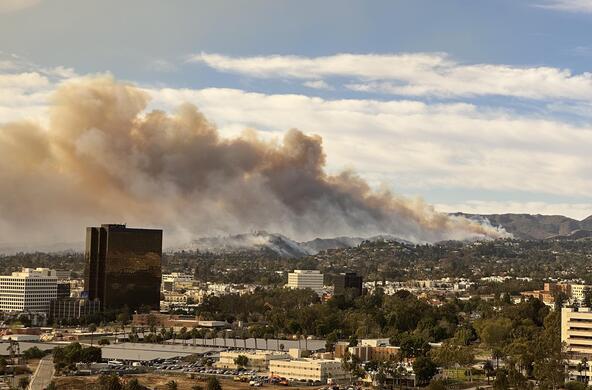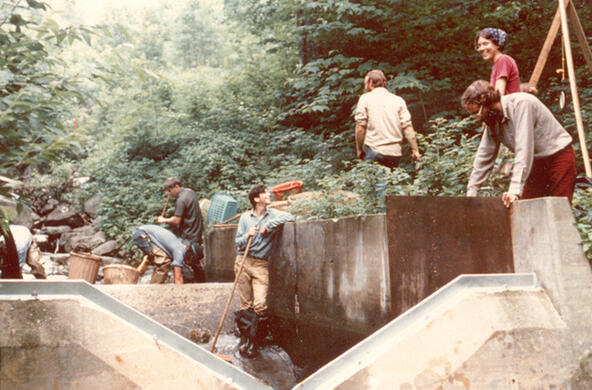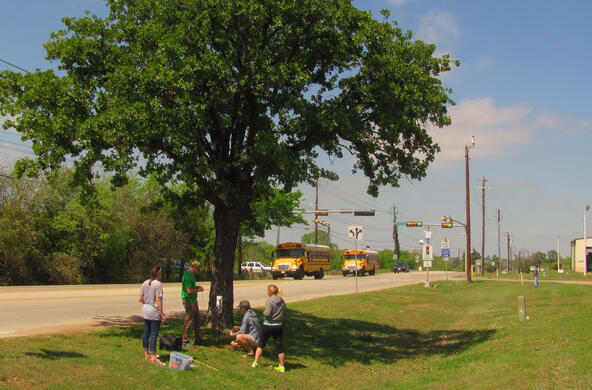When we look at the other planets in our solar system, the light we see is sunlight reflected off their surface. So it is with the Moon. And, if we were on the Moon, the brightness of the Earth would be determined by reflected sunlight.
Now suppose the Earth was veiled in a cloud of dust, say from a volcanic eruption, that increased the sunlight reflected to the Moon. The Earth would appear brighter, and outside, we’d find that the sunlight looked a little dimmer. These were probably the conditions after the massive eruption of Tambora in 1815, which produced a year without a summer in the Northern hemisphere. The Earth experienced a period of global dimming for several years. It snowed in New England in June and crop failures were widespread.
Just as the Moon casts moonlight upon the Earth, the Earth casts “earthlight” upon the Moon. Of course, seldom is anyone there to see it. But, a few years ago, atmospheric scientists discovered that you could measure the relative amount of earthshine on the moon by measuring the proportion of it that is reflected back to the Earth under the conditions of a new moon—that is, when the Moon is not reflecting any sunlight to us. Changes in the amount of earthshine are an index of changes in the reflectivity of the Earth, or its overall albedo. This is a clever way to measure the overall reflectivity of the Earth, when most satellites can only see a small portion of its surface at any moment.
Measures of earthshine suggest that about 30% of the sunlight that the Earth receives is reflected back to space. Although some analyses suggest a greater burden of atmospheric aerosols in recent years, since 1998 there have been no significant trends in earthshine, as seen by observations of the Moon. There are also no obvious trends in the data from several NASA satellites that measure albedo, including the CERES satellite (Clouds and the Earth’s Radiant Energy System).
Of course, there have been no massive volcanic eruptions during that period as well, but of greater significance is that while air pollution by particles has increased in China, the global level of reflective particles in the atmosphere has apparently not changed significantly in a way that might cool our planet. For instance, small particles have likely decreased over the northeastern United States and Europe.
Some have suggested that we might purposely increase the Earth’s albedo to counteract the ongoing warming of our planet. Following an analog to volcanoes, one way to increase Earth’s albedo would be to provide a layer of reflective aerosols, perhaps sulfate particles, in the stratosphere. These could be delivered by rockets, and for several years before they fell back to the surface, they would increase the reflectivity of the Earth, while simultaneously creating dimmer sunlight on its surface.
The global dimming is worrisome, inasmuch as crop photosynthesis depends upon adequate sunlight, and a worldwide increase in the Earth’s albedo would reduce the sunlight on the surface. Of course, once it began, the seeding of the stratosphere with aerosols would have to continue forever. Aerosols remain at those altitudes only for a few years; if they were to diminish, the underlying warming due to rising CO2 at other “greenhouse” gases in the atmosphere would take over with vengeance.
Known as geoengineering, this manipulation of our planet’s climate is daunting. Those promoting it need to consume a little less moonshine and let a little more sunshine brighten their thought process.
References
Mao, K.B., Y. Ma, L. Xia, Y. Chen, X.Y. Shen, T.J. He, and T.R. Xu. 2014. Global aerosol change in the last decade: an analysis based on MODIS data. Atmospheric Environment 80:
Palle, E., P.R. Goode, P. Montanez-Rodriquez, and S.E. Koonin. 2004. Changes in Earth’s reflectance over the past two decades. Science 304: 1299-1301.
Palle, E., P.R. Goode, and P. Montanas-Rodriquez. 2009. Interannual variations in Earth’s reflectance 1999-2007. Journal of Geophysical Research-Atmospheres 114: doi: 10.1029/2008JD010734
Prijith, S.S., M. Aloysius, and M. Mohan. 2013. Global aerosol source/sink map. Atmospheric Environment 80: 533-539.
Saunders, R.O. and D.W. Waugh. 2015. Variability and potential sources of summer PM2.5 in the northeastern United States. Atmospheric Environment 117: 259-270.
Wang, K., R.E. Dickinson, and S. Liang. 2009. Clear sky visibility has decreased over land globally from 1973 to 2007. Science 323: 1468-1470.








